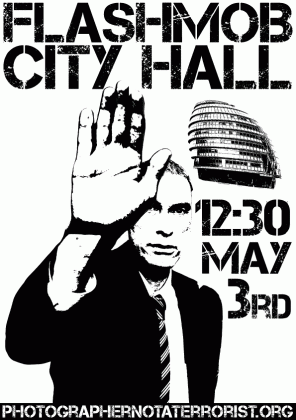
A domestic worker at St. Charles Hospital, Notting Hill, newly contracted out to cleaning company Mediclean, watches a televised speech by Prime Minister Margaret Thatcher. Image © 1986 Phillip Wolmuth.
The call to action from the TUC in Manchester this week brings to mind campaigns against public spending cuts imposed by previous governments, and the part that photography has played in them.
Perhaps the most memorable image of the ‘Winter of Discontent’, which immediately preceded the election of Margaret Thatcher in 1979, was of rats scurrying over piles of uncollected refuse sacks in Leicester Square. In that and subsequent disputes, those parts of the press more sympathetic to the trade union point of view, particularly the papers produced by the unions themselves, built solidarity with photographs of countrywide protest actions, and of workers in their workplaces.
One big difference between then and now, immediately discernable in the trade union (TU) press, is the current lack of representation of people at work. This is the culmination of a trend that began in the 1990s. It’s also at the root of the heated debate about the use of photography in TU journals that recently sprang up in the pages of the NUJ’s Journalist magazine.
The TU papers of the 1980s and 1990s were usually tabloid in format, like the NUPE Journal, for which the above photo was taken. Features frequently ran over two or three pages, with pictures used large, often occupying more than half the page. And they were very often unposed, documentary shots taken in workplaces – something that is now rare.
I think this is a significant loss, particularly in the present context. Such photographs can give meaning to the otherwise seemingly abstract effects of ‘planned public spending cuts’. If these images do not even appear in the TU press, they are unlikely to appear anywhere else.
Why has this change come about? One obvious reason is that the privatisation of so many services – from the railways and other public utilities, to hospital porters and school dinners – has made access difficult. Another is that union membership has fallen, resulting both in an increase in non-unionised workplaces, and in a decrease in union income. Over the same period there has been a move, across the media generally, away from serious photojournalism and towards ‘lifestyle’ and celebrity. And then there is the proposition that, with the rise of the new, fully automated, digital cameras, anyone can do it – so why pay for photos when members will send them in for free?
Access is a problem, but not an insurmountable one. As for the rest – I don’t buy any of it. Declining union membership has been offset by amalgamation – the membership base of the new ‘super-unions’ means that cheapskate sourcing of photography should really not be necessary. And there’s no reason why union journals should follow Murdoch and the rest down the celebrity and lifestyle route. As for digital cameras – ownership no more confers the ability to produce meaningful photojournalism, than does possession of a pen the ability to write like Shakespeare.
The fundamental reason for the absence is, I think, more depressing. It is that many editors (and those who employ them), inundated with mundane, ‘good enough’, almost-free imagery, have forgotten the value and impact of intelligently presented, serious photography.
Phillip Wolmuth is a freelance photographer and branch committee member. This article originally appeared on Phillip’s blog.



 5
5


